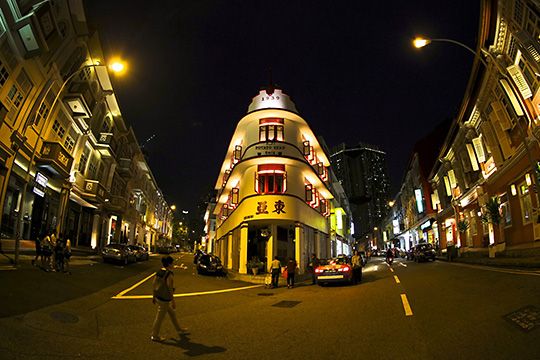Beautiful architectural photographs can be inspiring, yet disheartening at the same time. How does one transform a seemingly mundane building into a unique, breathtaking photograph? Your first step - arm yourself with the right camera gear. Here are some camera equipment must-haves for your next architecture photography excursion. (Report by Isaiah Tan)

1) Tripods and Filters:
Tripods and Neutral Density filters are necessary for great architectural photography. With these, you could use a slow shutter speed to artistically blur out pesky passers-by so they do not distract from the beauty of the building.
If you are able to shoot a series of photographs from a locked position, those people can be removed from your photograph by stacking. Some photo editing programs have very useful stack modes that analyse your photos and remove the elements that change between shots - in this case, the people.
With longer exposures, you could create more interesting photos with soft blurry clouds as the background to the building. You could also create light trails at night with traffic.
A tripod will also be useful in allowing you to stop down your exposure, creating a wider depth of field and ensuring most of your scene is in focus.
Also, a tip for capturing contemporary architecture: Modern architects love using glass. A Circular Polariser enhances colours and controls reflections on buildings with a glass or reflective facade.

2) A wide angle tilt-shift lens is indispensable for "architecturally accurate" photography. The tilt-shift maintains straight verticals.
Panoramas could be produced with the tilt-shift without moving the camera. You could even produce a vertical panorama for those towering skyscraper shots that pose a challenge to those who attempt it unprepared. If you need greater coverage, ensure your tripod allows separate tilt and pan locks.
A tilt-shift is also useful for controlling the plane of focus. This allows the photographer to only showcase specific areas of the building. This technique is great for blurring out clutter, such as passersby and signboards in the back- or foreground.

3) Some consider the fish-eye lens a questionable choice for architectural photography.
Sure, it distorts edges and often presents a warped view of the building. However, when used creatively, the lens can be used to lead the viewers’ gaze to the subject with little distortion - though do ensure the subject is placed in the centre. The result is a subject that stands out more dramatically as the surroundings are distorted.

4) A good architectural photographer should carry a wide angle and a telephoto lens.
The wide angle ensures coverage of the building and surroundings, and it’s useful for a bird’s eye view. The telephoto provides closer shots of details that could be on a high ceiling or other inaccessible areas.
The right equipment is just the first step. Read Capturing The Beauty of Buildings to learn more on how to get the ideal architectural shot, as well as Dream Spots: Skyscrapers for a list of breath-taking buildings.

A professional videographer with a love for photography, Isaiah runs a video production company, a wedding video/photo business, as well as a small bar in Singapore. He enjoys experimenting with different photographic techniques and always wants to learn and discover more of the world around him.

































